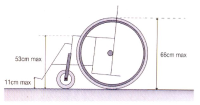
[Purpose] A potential issue for wheelchair sports are the characteristics of wheelchair design. The purpose of this review was to investigate the characteristics of design in wheelchair sports including the height of seat, camber and handrim size for improving the performance. [Results] The optimum height of seat related to trunk, arm length and handrim size. The lower seat showed the push efficient highly, while higher seat increased the energy expenditure. In energy expenditure, the optimum height of seat was 100-120° of elbow angle. Handrim size play the role in gear. The smaller handrim size acts like high gear, it gains disadvantages in acceleration, it gains advantages in maximum velocity. On the contrary, the higher handrim size acts like low gear, it gains disadvantages in maximum speed, it gains advantages in acceleration. The ratio of gear consideration in power and velocity. When increased camber enhanced the lateral stability, easier catch the handrim and easier arm motion. So it improved the energy expenditure and push technique. When increased camber enhanced the mechanical efficiency and stability, but it decreased the power. The racing wheelchair camber using the 8° and 10°. [Conclusion] Athletes, coaches and wheelchair experts are provided with insight in the performance effect of key wheelchair design settings, and they are offered a proven sensitive method to apply in sports practice, in their search for the best wheelchair-athlete combination.

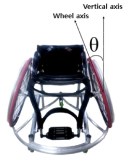
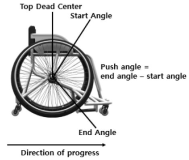
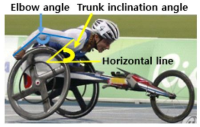
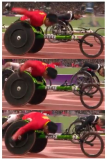
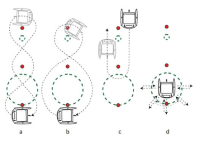
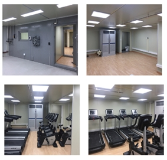
Purpose The purpose of this study is to emphasize the need for the establish and the use of altitude training center via examining exercise training method in natural or artificial altitude environment that is applied to various elite athletes in various advanced countries to maximize exercise performance and its effectiveness. Results Altitude training in natural or artificial altitude environment enhances aerobic and anaerobic exercise performance baesd on the hematological and nonhematological adaptations to hypoxic conditions. These altitude training methods can be classified into living high training high (LHTH), living high training low (LHTL), and living low training high (LLTH). LHTH (i.e., developed since the 1968 Mexico Olympics) and LHTL (i.e., developed in the 1990s by Levine and Stray-Gundersen) improve exercise performance via hematologic changes through erythropoiesis such as increased hemoglobin mass and erythrocyte volume. On the other hand, LLTH (i.e., has been developed variously since the 2000s) is composed continuous hypoxic training (CHT), intermittent hypoxic training (IHT) and repeated sprint training in hypoxia (RSH), and the altitude environment is constructed using a vacuum pump and a nitrogen generator. In general, LLTH method dose not induce hematological change in a short time within 3 hours. However, CHT and IHT enhance aerobic exercise capacity by improved exercise economy, supply and utilization of blood to tissues, capillary and mitochondrial densities, and oxidative enzyme activity through various biochemical and structural changes in skeletal muscle and cardiac muscle. RSH enhances anaerobic power and repetitive sprint performance by improving glycolytic enzyme, glucose transport, and pH control. In Korea, however, there are almost no facilities for altitude training that is applied to enhance athletic performance in advanced sports countries and recognition of the need for altitude training is also very poor. Conclusions Therefore, it is very urgent to develop altitude training for maximizing athletic performance in Korea and a lot of support and efforts are needed from the government and local governments.

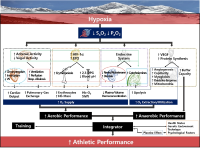


Purpose The purpose of this study was to provide useful information on the improvement of performance by measured the psychological-physiological stresses experienced by elite shooters during a competition. Methods Thirty-eight elite shooters participated in this study (Male = 13, Female = 25). Psychological stress was measured and used for this study based on the stress factors found in the elite target stress study by Park(2015). The cortisol, a physiological stress hormone, was measured using saliva. Results The reliability of the psychological stress sub-factor pre-post analysis results showed no statistically significant. The concentration of cortisol measured on the day before the competition (0.1704 µg/dL) significantly increased immediately before the competition (0.3558 µg/dL). Cortisol immediately before the competition showed negative correlation (r=-.361, p=.036) with the competition score, and the regression variable of cortisol was 13%. Conclusions In this study, physiological stress had a negative effect on elite shooters performance compared to psychological stress.

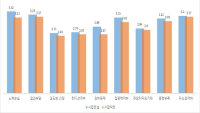

PURPOSE The purpose of this study was to provide information for improving the performance and skills of 500 m speed skaters by analyzing the kinematic and kinetic changes in their slide board movements over time. METHODS The subjects were 10 male short-distance skaters in their 20s to 30s who were registered as professional athletes with the Korea Sports Council. The changes in joint angle, joint moment, and joint power over time in the subjects’ slide board motion were measured and analyzed. RESULTS It was found that during phase 2 of the skater’s slide board movement, there was an increase in plantar flexion and a decrease in flexion of the lower extremity joint and extension of the knee and hip joint, with decrease in positive power of the knee joint. CONCLUSIONS The results of this study are expected to provide practical information to skating coaches and athletes by quantifying the biomechanical factors observed over time during slide board movements. In addition, this study is expected to contribute to the field of speed skating by presenting scientific training methods and proposing new analysis techniques to improve performance in the future.
Purpose The purpose of this study was to find out the physical characteristics of Wushu athletes by comparing the differences on the results of physical fitness between the male athletes of the Wushu national team Taolu and the Sanda group. Methods Measurement of basic and professional fitness based on muscle function, targeting 37 men Wushu national team players (24 taolu, 13 Sanda) in the selection and evaluation contests twice in 2018 and 2019. Body composition, isometric muscle strength, flexibility and equilibrium, anaerobic power, and isokinetic muscle strength. The fitness factors were divided into two groups, Taolu and Sanda. Results First, body fat rate of the Sanda athlete group was significantly lower than that of the taolu athlete group (p<.01). Second, in the isometric muscle strength category(back muscle strength, grip strength), the Sanda athlete group had higher muscle strength than Taolu athlete group, but there was a statistically significant difference only in the left grip strength (p<.01). Third, in terms of flexibility and equilibrium, the taolu players were significantly higher in all items(p<.001). Fourth, in the anaerobic power, the taolu athlete group had higher both the peak power and the mean power, and there were a significant differences(peak power: p<.01, mean power: p<.001). Fifth, isokinetic muscle strength was significantly higher in the right knee flexion of the taolu athlete group (p<.01), and lumbar extensor muscle was significantly higher in the Sanda athlete group (p<.05). Sixth, in the isokinetic strength ratio, the knee flexion ratio of the Sanda athlete group were significantly higher on the left and right knee flexion and extensor ratios (p<.05). In addition, in the lumbar flexor and extensor ratios, the group of Sanda athlete group were significantly higher on the lumbar extensor(p<.05). Seventh, there was no significant difference between two groups in isokinetic muscle power. Conclusions The results of this study can be used as basic data to improve the efficiency of technical and physical training through the analysis of the characteristics of Taolu and Sanda. The effectiveness of this training will help to improve the performance.
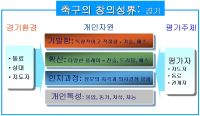
The purpose of this study was to explore a framework of understanding football performance. Researcher review was conducted to organize perspectives for football performance and drew implications as well as drift of football performance based on intelligence approach. Discussions for intelligence had been proceeded in concepts of learning ability, multiple intelligence, successful intelligence, and moral intelligence. Discussions of football performance approaches fitness, skill, and strategies in traditional intelligence aspects. The multiple intelligence perception discusses perspective, mentality, body, and analysis. The successful intelligence perspective deals with creativity, practical intelligence, and football talents. However, specific discussions for moral intelligence have not been progressed yet. FIFA’s social responsibility project and UEFA’s RESPECT campaign reflect that the discussions of football performance develops in a way of the moral intelligence. In European football, issues regarding value, such as RESPECT and against Racism, are currently emerging. Considering the change in the European football, the global football leagues will share the issues related to value in the near future. Given the fact that discussion for intelligence had been proceeded learning ability, multiple intelligence, successful intelligence, and moral intelligence, the moral intelligence will be a main concern in the further football performance discussion. The moral intelligence will be incorporated into football performance evaluations soon. Furthermore, teams and players will strive to place efforts in order for pursuing value and reputation as factors of performance.

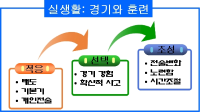




PURPOSE This study seeks to contribute to the enhancement of the performance of domestic wheelchair racers by producing 3D-printed customized gloves and verifying their application effect. METHODS A total of three male wheelchair racers who belong to the T54 and have won gold medals in the National Para Games within the last three years were selected as subjects. Each subject performed three session s of muscle activity and maximum speed measurements before and after applying a 3D-printed glove during the stroke and recovery phases of wheelchair racing, focusing on the pectoralis major (PM), triceps brachii (TB), and erector spinae (ES) muscles. To standardize the muscle activity measurement data, the relative muscle activity level (%) for each section was calculated by maximum voluntary isometric contraction (MVIC) for each subject. All maximum speeds of each round of driving were calculated by the average record for comparative analysis. In addition, to verify the effectiveness of applying the 3D-printed glove, the Wilcoxon signed rank test, which is a non-parametric test method, was performed on all measured values using SPSS 24.0. RESULTS This study derived the following results. First, a statistically significant difference was observed in the muscle activity of each major muscle before and after using the 3D-printed glove. In common, an increase in muscle activity of the PM, TB, and ES was confirmed in the stroke section, and an increase in muscle activity of the TB was confirmed in the recovery section. Second, a statistically significant difference was documented in the maximum speed before and after using the 3D-printed glove. When using 3D-printed gloves, the maximum speed increased by 4.57, 3.63, and 1.06km/h for Payer A, and by 5.9, 6.04, and 7.86km/ h for Player B. In the case of Player C, the speed increased by 6.73, 2.27, and 0.83km/h, and all three players improved their maximum speed through the 3D-printed gloves. CONCLUSIONS Our study suggests that the application of 3D-printed customized gloves can have a positive impact on the performance of wheelchair racers. If the application of 3D-printed customized equipment is extended to athletes in a wider range of sports in the future, this could significantly contribute to the improvement of performance in domestic disability sport.
This study was to explore the factors influencing Olympic performance positively and negatively. In order to achieve this purpose, 60 athletes, who participated in 2012 London Olympic games, responded on open-ended questionnaire. In addition, 10 athletes, who won medals in London Olympic, responded on in-depth interview. Collected data were analyzed by deductive content analysis. The results of this study were as follows: firstly, the factors influencing Olympic performance positively were psychological preparation, strengthening training, physical conditioning, support from significant others, material support, cheering of Korean people, self respect as a Korean national athlete, different game environment, team cohesion, sharing Olympic experience, and support of sports science. Secondly, the factors influencing Olympic performance negatively were psychological pressure, excessive expectation, negative interpersonal relationship, condition decline, overtraining, unstable environment, insufficient facilitation, decrease in performance level, and especially ineffective village room placement and media management during Olympic period. Thirdly, the differences between Olympic games and other world competitions , perceived by athletes were competition scale, psychological attitude, training support, systematic preparation, and benefits from winning medals. The results of this study will give fundamental information in developing a scale which can measure Olympic preparation level and in developing Olympic preparation guideline. Therefore, it will help athletes ,who participate Olympic for the first time or athletes who did not perform well in pre-participated Olympic games, to understand and apply in training the factors influencing Olympic performance and help them to perform better in Olympic games.
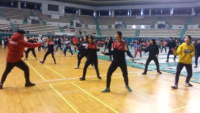
Purpose The purpose of this study was to investigate the effects of 3 weeks of fencing specific training on physical fitness in elite fencers. Methods Forty eight elite fencers participated in this program (Male= 24, Female= 24). Training program consists of dynamic stretching, step and agility training, and it was conducted with the general fencing practice during 3 weeks. Body composition and physical fitness (muscle strength/power, agility, anaerobic power and flexibility) were measured before and after training. Data were analyzed using IBM SPSS Statistics ver. 23.0 (IBM Co., Armonk, NY, USA). Paired t-test (pre vs. post) was used for comparison between groups. Results Muscle mass and body fat(%) were significantly changed after training in male group. Agility was significantly improved in change-step jump and reaction time after training both in male and female group. In Anaerobic power, peak power (relative power, absolute power) was significantly increased after training in female group. Flexibility was also significantly improved after training in left ankle ROM of female group. Conclusion Application of fencing specific training program focused on fencing movement seems to be effective on agility in both groups, muscle mass and body fat(%) in male group, and anaerobic power and flexibility in female group.

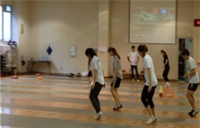



The purpose of this study was to explore and confirm Kumi-kata related factors of muscle strength by performance level in Korea elite female judoists. In order to achieve this purpose, 14 elite female judoists participated to this study. The subjects were divided to two groups (World Class Group and Non-World Class Group) according to their world ranking level(by ranked 30th). The analysis factors were repeated grip strength, Kumi-kata specific pulling strength and isokinetic strength of trunk joint. The results were as follows: Firstly, World Class Group had significantly higher repeated grip strength as compared to non-world class group (p<.001). Secondly, World Class Group had significantly higher specific Kumi-kata pulling strength as compare to non-world class group (p<.05). Finally, The differences between the two groups for isokinetic strength of trunk joint were non-significant. The results of this study indicates that a strong relationship exist between Kumi-kata related specific muscle strength and performance level in korea elite female judoists.
